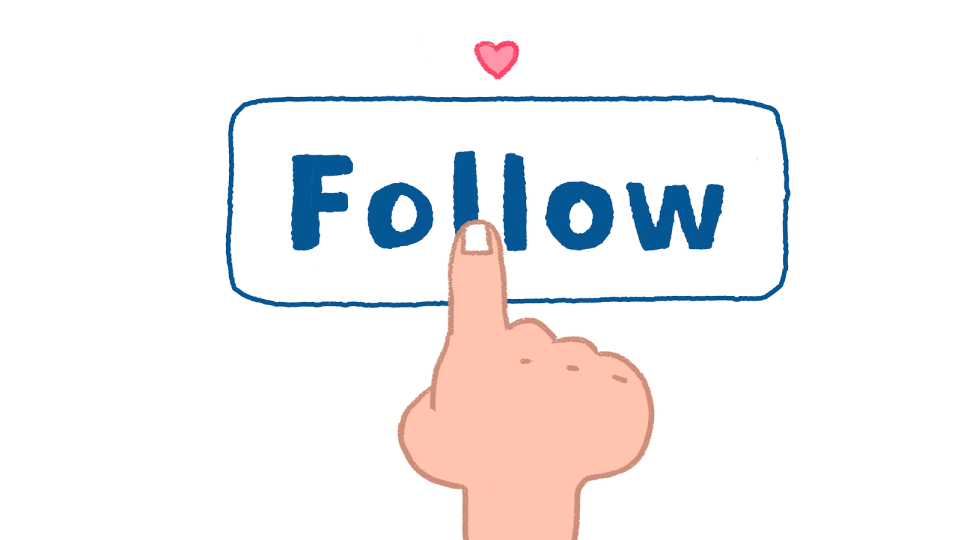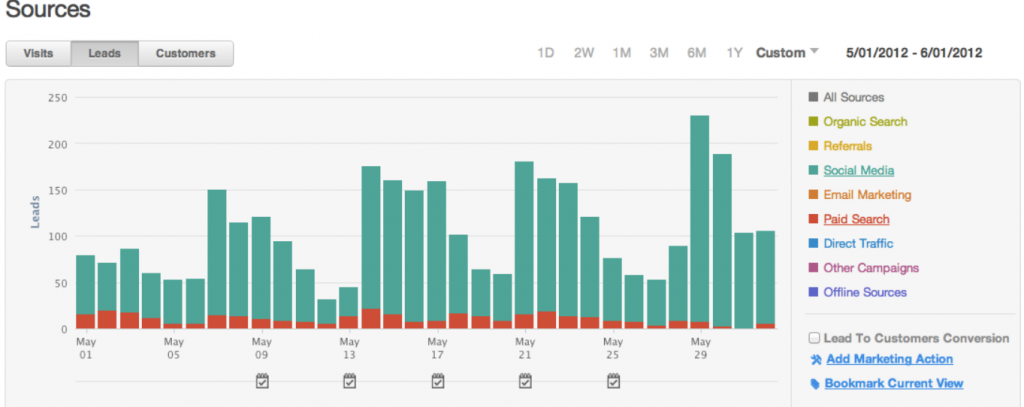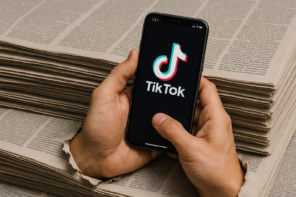
Tuesday September 1, 2020
How to Measure Your Social Media Success: Go Beyond RoI
Social media comes with a lot of touchpoints and data to analyse. From impressions, reach, clicks, likes, comments to followers, conversion, sales, response time, and more — it could feel overwhelming. It could be hard at the end of each quarter when asked to present a performance report for the last 3 months. You may have questions such as what all data to look at, what to pit it against to make any sense of whether it is good or bad, and how to structure and present it to make it digestible.
Here are 4 areas structured according to the buyer journey within which you can calculate and present data. As we’d notice below, all 4 are equally important to measure for social media because from awareness to sales, social media provides several financial, non-financial, longterm, and short term benefits. A performance report that measures all of these would provide a full picture.
4 Things to Measure for Social Media Success
1. Awareness
For metrics that show if awareness around your brand is increasing, look at data for
- impressions (number of times your content was displayed to people),
- reach (number of unique people who saw your content),
- followers,
- social mentions (number of times you were mentioned on social media), and
- the share of voice (how much of the overall conversation around your industry or product is about your brand).
All these metrics would help you see if people are being made aware of your company. For example, when an influencer mentions your brand in their LinkedIn post, the followers of that influencer are being made aware that your company exists. Similarly, if your branded hashtag (for example, #curzonpr) on social media is mentioned 30 times as compared to 70 times of the industry at large (for example #pr) in a month or day, it means your share of voice is 30/70 * 100. A good share of voice would imply people following news and hashtags about your industry would have heard about your company this month or today.
These numbers show how broad your audience is at the top of the funnel at the awareness stage.

Source: SproutSocial
While this number is not close at all to showing the actual effect of your social media activities on your Rate of Investment or RoI, it is an important metric to consider. This would come under non-financial impact for now, but studies show that social media is usually the first place where a buyer comes to know about your brand. They then go on to buy from you months or years later after several other touchpoints across the buyer journey. A study ‘Why marketers aren’t giving social the credit it deserves’ by Adobe reveals that marketers using last-touch attribution model, i.e. giving credit to the last post or channel that led users to convert, “undervalues social media’s role in engaging customers earlier in the buying process.”
HubSpot, on the other hand, uses the first-touch attribution model. This means giving credit to the source that introduced the company to the person for the first time. One of HubSpot’s case studies shows that their organic social media brings in more leads to their company than even paid advertising — when measured via the first-touch attribution.

The Content Marketing Institute suggests looking at content marketing, such as social media, as an asset that is built long-term instead of quick financial gains from quarter to quarter.
2. Engagement
Engagement metrics are usually a sum of all the comments, likes, shares, and clicks you have received over a period of time. This is an important metric because an engaged audience is most likely to buy from you, and spread good word of mouth about your brand on their social media, and become brand loyalists.
Measuring engagement, hence, gives a clearer description of the quality of your followers. This, again, is a long-term metric which will see gains in the future. “A high level of engagement shows companies their consumers are listening, sharing, and responding to the content your company is producing,” says SocialBakers.
3. Conversion and Sales
Conversion and sales are calculated by finding the number of people who converted by looking at your social media post and who became customers via it. As discussed above, what this number is would depend on what kind of attribution model you use. For example, if your company calls a sign up to an email newsletter or downloading of a pdf guide a conversion, tracking how many of those people who took those actions came from social media — either as the last touchpoint or the first, depending on your attribution model, would give you the number of conversions from social media.
This data is usually what marketers and CEOs care about the most because it shows short-term and financial progress from quarter to quarter.
4. Retention and loyalty
For retention and loyalty, customer care-related data such as the following are looked at:
- the number of issues resolved over social media,
- amount of time it takes to respond once a person reaches out on Twitter or Facebook,
- the time it takes to resolve a complaint on social media,
- customer satisfaction (calculated by a Net Promoter Score or NPS), and
- sentiment analysis via social listening.
These things are good to measure because they impact brand reputation once a follower becomes a customer. This has a long-term financial impact because according to inbound marketing methodology, the best way to feed the upper level of the marketing funnel is by great customer service. Because these customers would end up purchasing more from you, plus recommend your brand to others if they have a good experience. It decreases the need to do outreach as leads start to come to you. The marketing funnel instead becomes a flywheel — with the bottom of the funnel feeding the top.

The Inbound Flywheel
Source: HubSpot
Also, it acts as risk management in times of risk to reputation. “How many costs would be reduced as a result of…community of fans and advocates available when needed?” writes Forrester in research. As an example, it calculated the impact of customer loyalty and retention on a company’s bottom line:

How to Measure: Stats Per Impression
There are various ways to measure the above metrics. Do you calculate engagement per day or per post or per follower or per impression? Per-day measurements fail to take into account for days you don’t post; per-post measurements fail to take into account the number of your followers. According to Buffer, “Stats per follower, then, seem to be the most consistent and true measure of a post’s success.” But if you have many followers who did not even see the post, the engagement metrics would be skewed towards the lower end. Hence, “if reach/impression data is available, even better: divide the metric by the number of people who saw the post,” writes Kevan Lee from Buffer.
It would measure how many followers who see and then decide to engage or not engage with your post. Improving on this number is easier by improving the quality of your content, than trying to improve the engagement rate when say, 5% of your base followers are not even active on LinkedIn anymore and hence don’t even see your posts — good or bad.
What to Measure it Against
Context or benchmarking is key to measuring social media success. It helps us make sense of the data. It means we are looking at data from a lens of relevance — did we perform better in this quarter from the last? How is our engagement rate in comparison to the industry influencers? What is the average rate of conversion in the industry, and where do we stand against it?
Most of the data on the past performance needed for benchmarking is readily available on social media analytics tabs of each social media. If you want to compare your performance with the top influencers in your industry, you could do it manually for awareness and engagement metrics. By going to their profiles, you could calculate the average of the relevant metrics (followers, likes, shares) of the recent posts of the top 5 pages. For industry benchmarks, look at data released each year in your business category by SproutSocial and others.
Though, when measuring against industry averages, you would have to calculate your data in the same format as that available for the industry. For example, if industry data available shows engagement per post, then in order to compare, your company data should also be in engagement per post — and cannot be in engagement per impression.
You don’t have to use all the benchmarks — only those that make sense to your business.
All Data Is Not Equal
Even as you try to create a snapshot of your social media success by comparison charts and graphs, data for different things are valued differently. A social mention from top influencers is valued more than social mention from a small business. Clicks on a social media post linking to a webinar are more likely to convert than clicks on a social media post linking to a blog post.
Infographics are shared 3 times than any other type of content on Twitter — so if you are benchmarking against influencers who use a lot of infographics while you post written content, you are not going to come across good against them in your report, even if your written posts got better engagement than their written posts.
Similarly, all social channels are not equal. Maybe your target audience hangs out more on LinkedIn than Instagram. So calculating aggregate conversion across social channels might not show the high increase in qualified leads coming in via LinkedIn. In such a case, also measuring data for each channel helps in knowing what channel helps the most with what kind of metrics — and creating a content strategy to feed those particular metrics for those channels in the future.
Hence, measuring social media success is very much personal to your brand, business objectives, marketing goals, social media strategy, and industry. Using free analytics; paid tools like SproutSocial and HootSuite; and manual analysis, for example, for different kinds of content or user actions specific to a channel or number of follower growth from just one specific top-tier social mention might help you decide how, what, and against what to measure so as to get a snapshot of your social efforts that is meaningful. Also, qualitative measurement and analysis like what could be the reason behind the success of a social campaign — positioning, timing, influencers used, social mentions, etc. could tell a story that might not be reflective in numbers.
Curzon PR is a London-based PR firm working with clients globally. If you have any questions, please feel free to contact our Business Development Team bd@curzonpr.com




Follow us